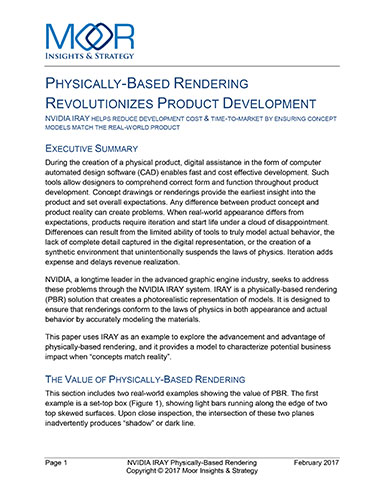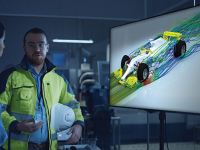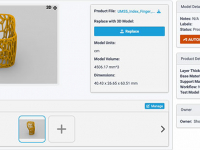Physically-Based Rendering Revolutionizes Product Development
NVIDIA IRAY helps reduce development cost & time-to-market by ensuring concept models match the real-world product.

February 13, 2019
During the creation of a physical product, digital assistance in the form of computer automated design software (CAD) enables fast and cost effective development. Such tools allow designers to comprehend correct form and function throughout product development.
Concept drawings or renderings provide the earliest insight into the product and set overall expectations. Any difference between product concept and product reality can create problems. When real-world appearance differs from expectations, products require iteration and start life under a cloud of disappointment.
Differences can result from the limited ability of tools to truly model actual behavior, the lack of complete detail captured in the digital representation, or the creation of a synthetic environment that unintentionally suspends the laws of physics. Iteration adds expense and delays revenue realization.
NVIDIA, a longtime leader in the advanced graphic engine industry, seeks to address these problems through the NVIDIA IRAY system. IRAY is a physically-based rendering (PBR) solution that creates a photorealistic representation of models. It is designed to ensure that renderings conform to the laws of physics in both appearance and actual behavior by accurately modeling the materials.
This paper uses IRAY as an example to explore the advancement and advantage of physically-based rendering, and it provides a model to characterize potential business impact when “concepts match reality”.
Fill out the information below to download the resource.
Latest News







